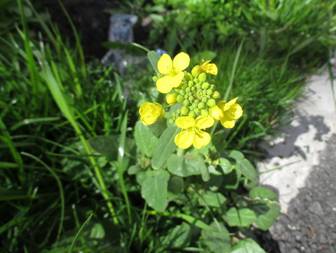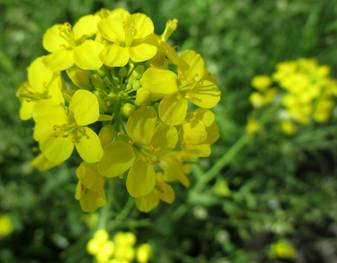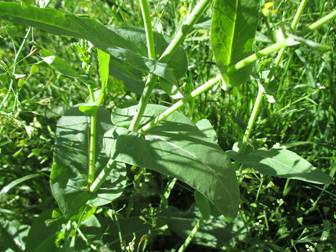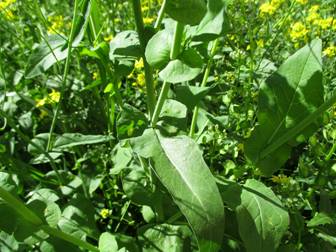



Field Mustard (Brassica campestris, Brassica rapa subsp. oleifera), fam. Brassicaceae.
Once in early spring a blooming lawn of this plant was found near one of the houses in Volkhovska street. Possibly, the seeds were not planted in purpose, but arrived there as a weed? Anyway, those bright flowers with sweet smell looked a wonderful decoration of that garden bed in March.
This is an edible wild plant, also cultivated as oil and honey plant. It is grown as a salad green vegetable, similar to Yellow Rockercress in taste and other properties (but its development and blooming start one month earlier). It is also a fodder plant for cattle, pigs and rabbits. However, its value is inferior to common cabbage and many other cruciferous vegetables.
This is also a dangerous weed. It severely exhausts the soil, absorbing large quantities of nutrients. But amazingly, it can be used for the opposite purpose – to suppress other weeds and to enrich the soil through using as green manure. Field Mustard can utilize the very first spring warmth, since its seeds sprout already at +2°C, so it does not compete with warm-loving plants that could be grown afterwards. The green biomass of Field Mustard is plowed into soil at the time of its greatest development (before the seeds ripen). The seeds contain oil, which is bitter even after any processing, and so it only has industrial application, for drying oil production.
Common Cabbage (Brassica oleracea), of course, is also grown in the gardens of private houses of DVRZ in Kyiv, but usually it is not available to see by a passerby. However, sometimes its ornamental varieties can be met. From afar they look like large low flowers. When coming closer, you understand that this effect is only due to bright (pink, purple or white) color of the top leaves. Usually the ornamental cabbage is noticed during the cold season, for example late in autumn, when there are no true flowers around. It is very cold-resistant, easily bearing moderate frosts and temporary snow cover. Ornamental cabbage (kale) is edible, too; but most often its leaves are tough and require long cooking.